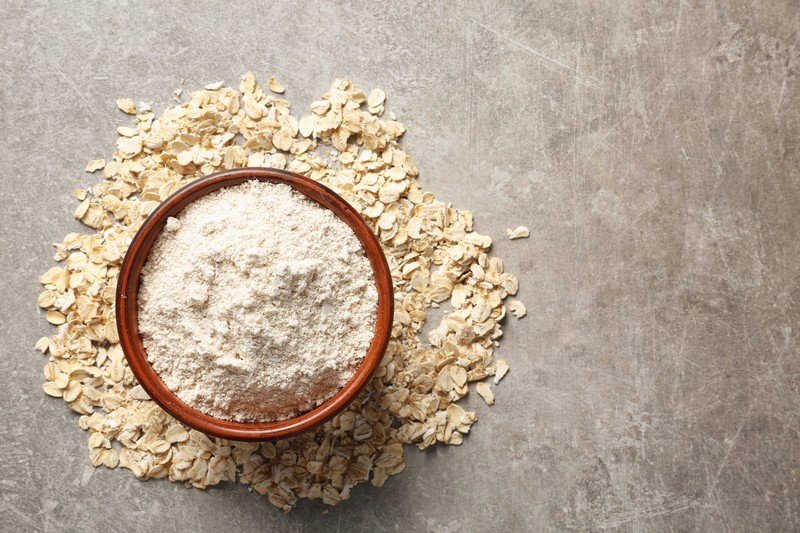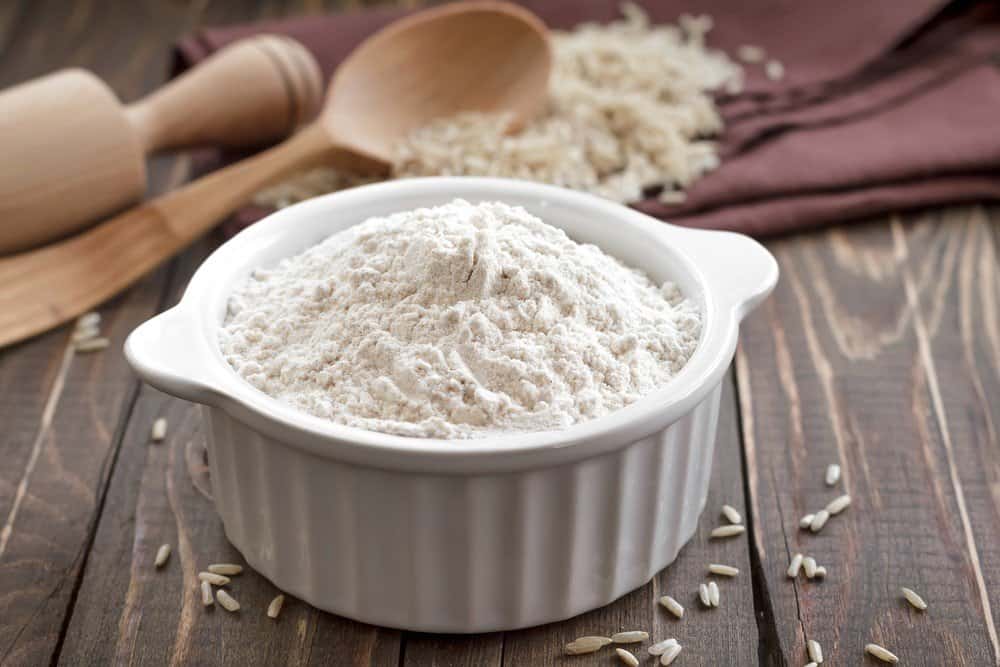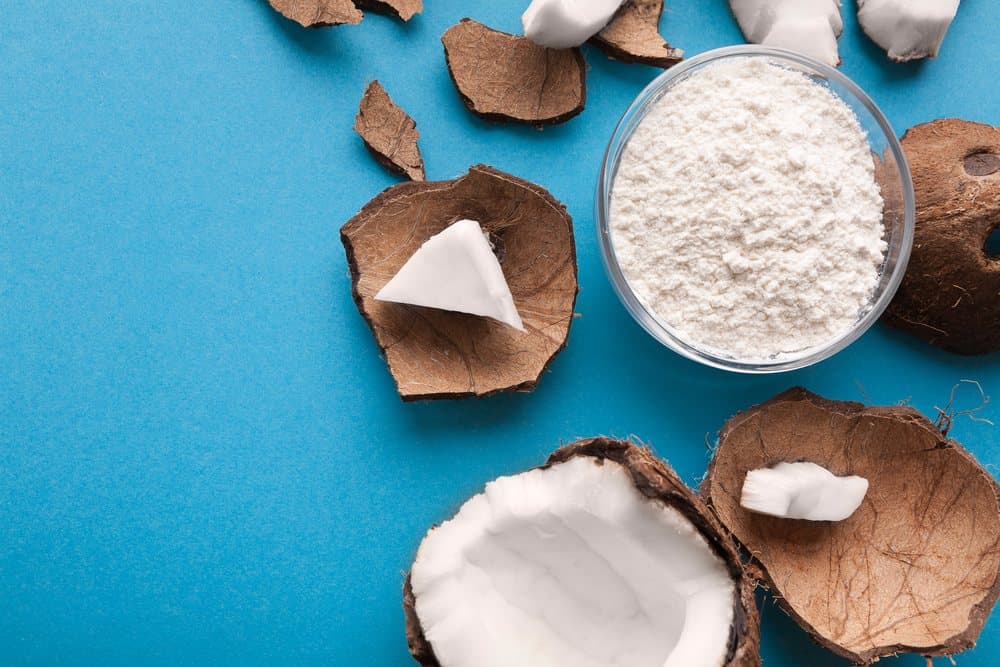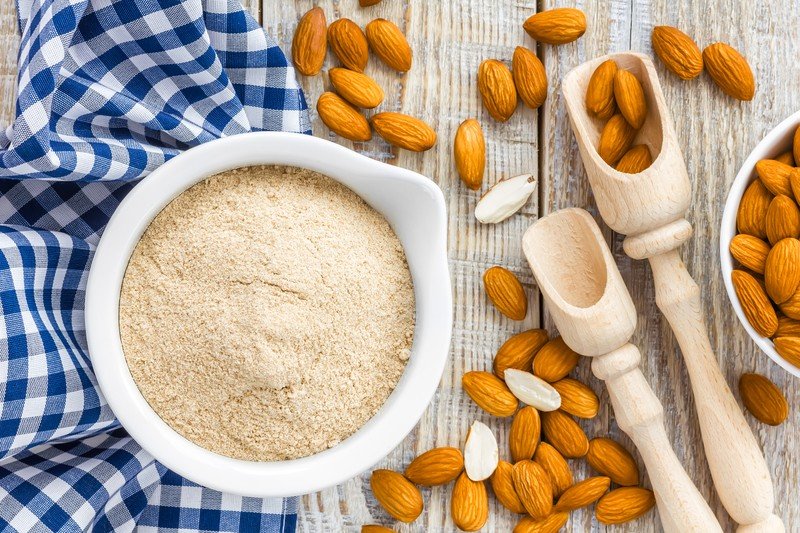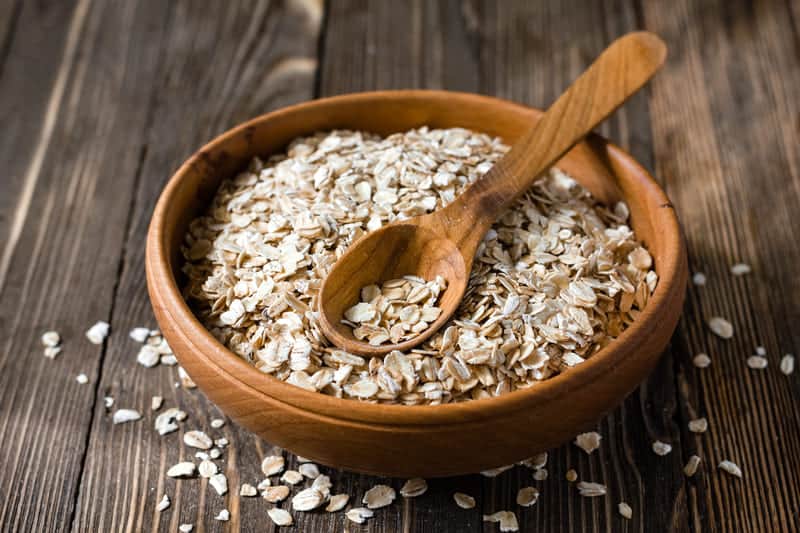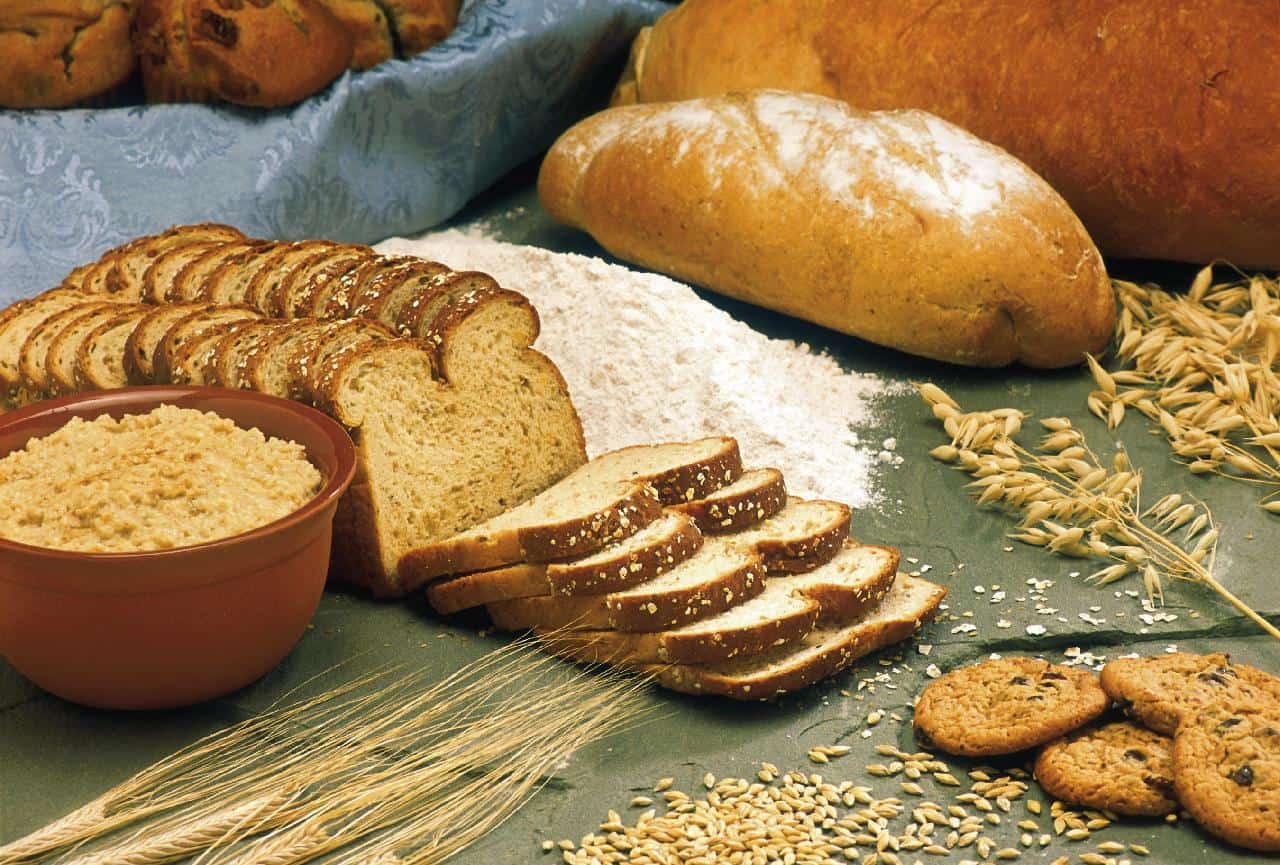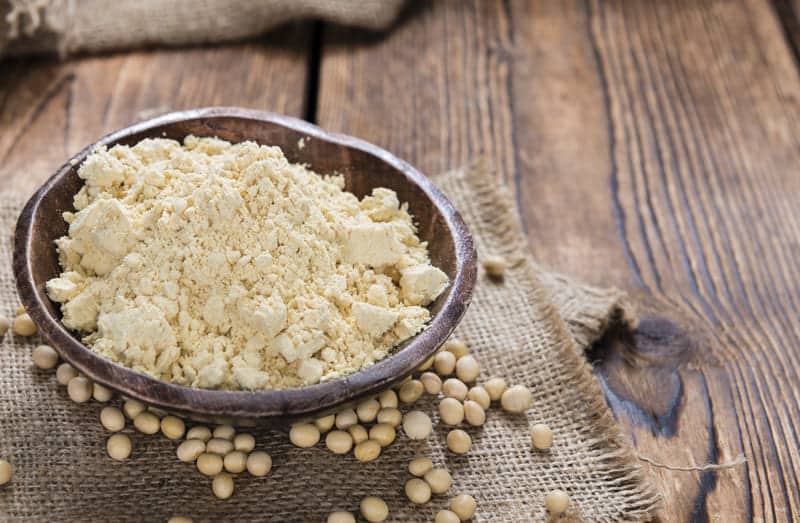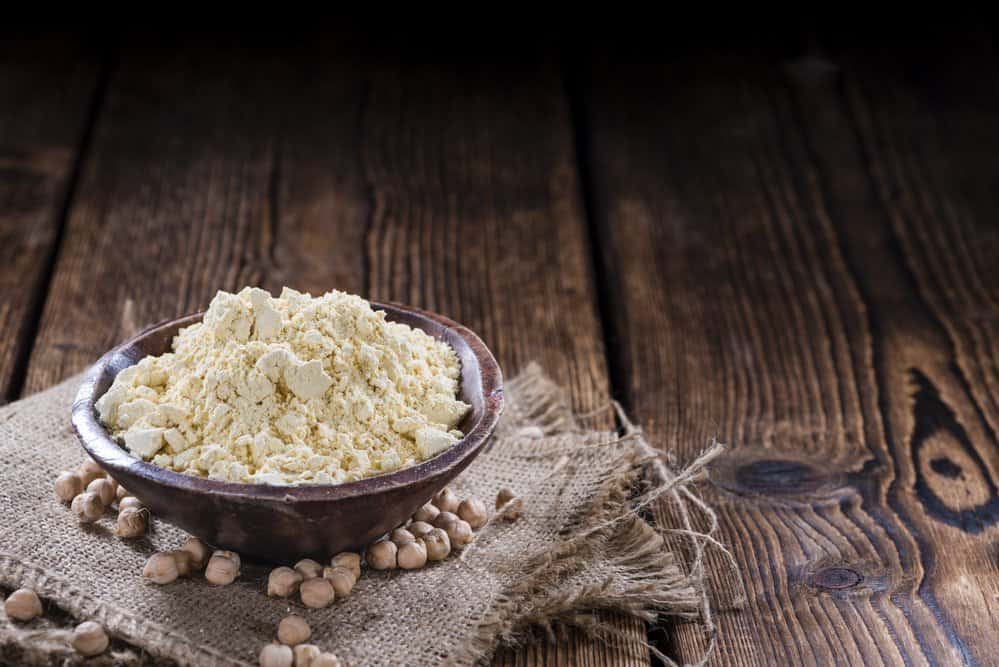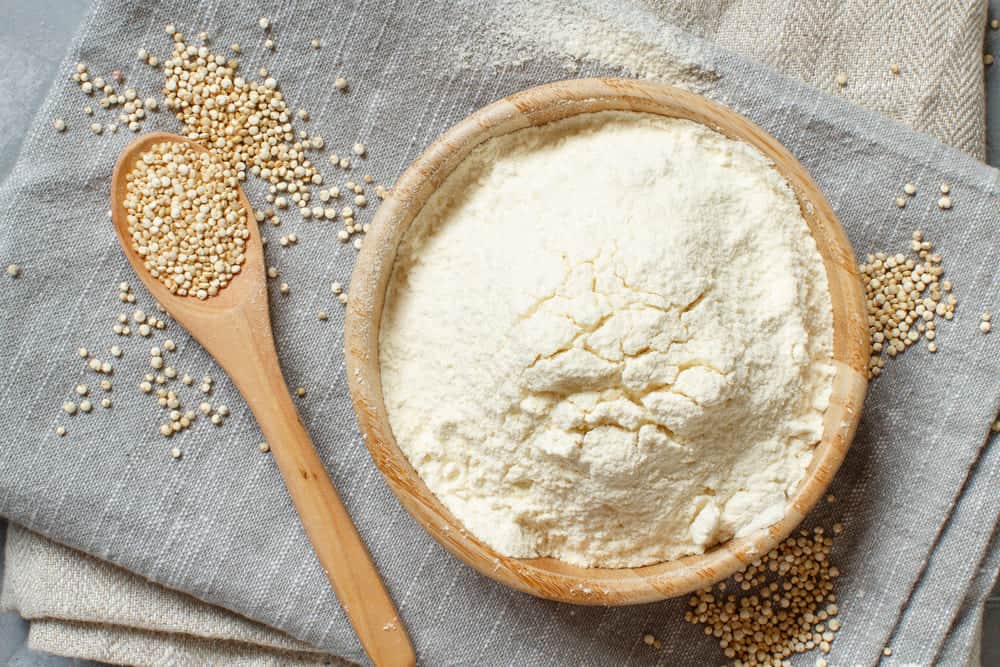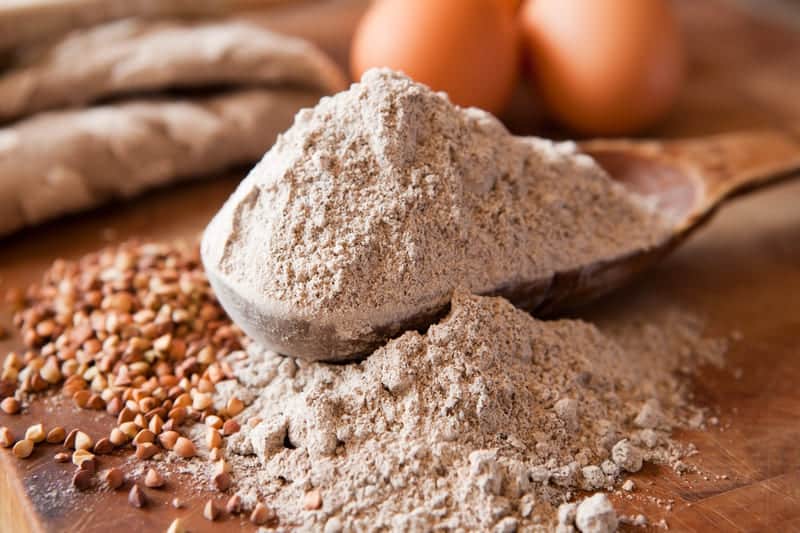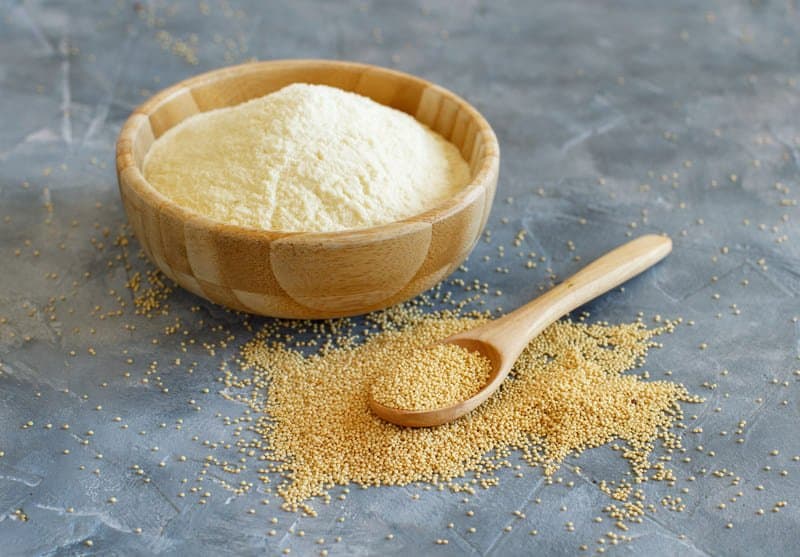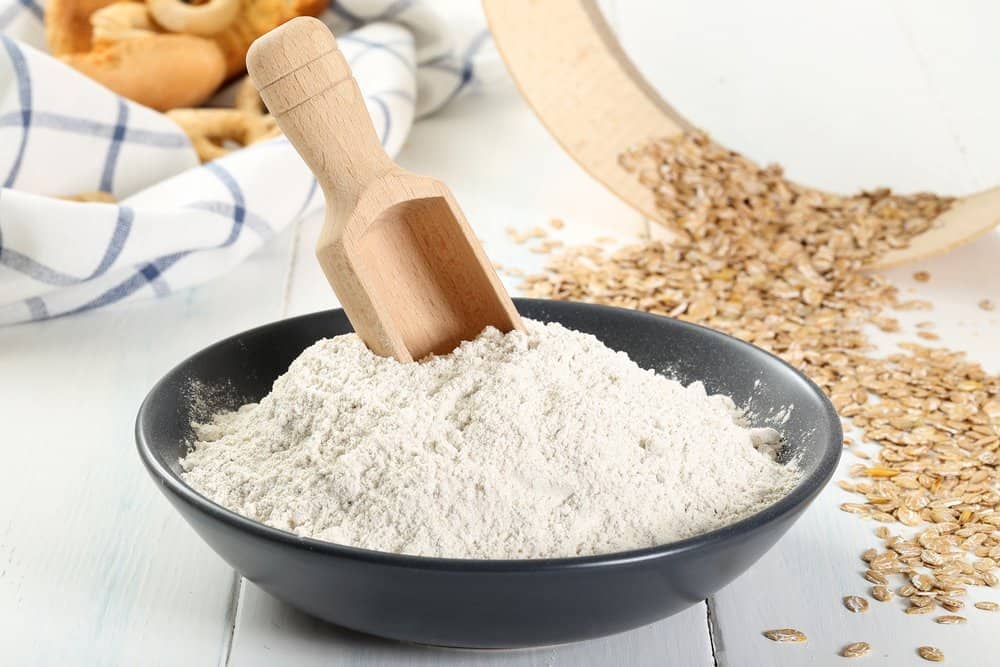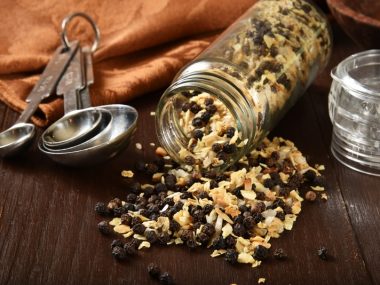Oat flour is by far one of the healthiest sources of carbohydrates to complete a balanced diet that your body needs.
If you’re trying to stay away from unhealthy carbs and gain more fiber from your food, choosing oat flour will never let you down. In fact, it’s readily available in most grocery stores or markets.
However, if you’re not a fan of oatmeal, or just ran out, you have other substitutes to look into like brown rice flour.
Below, I have made a list of other products that you can use instead of oat flour, so take a look and pick the one that meets your needs.
Oat Flour Substitutes
Let’s go over how these four substitutes work in most dishes.
1. Brown Rice Flour
Brown rice flour is processed through milling and grinding the brown rice until it turns into its powdery form. Don’t confuse it with white rice that they’re the same because they’re not.
Brown rice is processed differently compared to white rice.
White rice went into refinement which takes off the husks, which explains its white appearance. While brown rice, on the other hand, didn’t go through refining and retains most of its natural component.
With that being said, brown rice retains more of its nutrients and other vitamins especially fiber, because of the absence of refinement. No wonder it’s one of the top choices of health consumers when substituting white carbohydrates in their diet.
That’s why you can use brown rice flour when you’re out of oat flour. It’s the best substitute due to its flexibility. Mostly used in desserts, especially sticky rice cake dishes, you can also use this for other baking recipes.
When substituting, use ¾ cup of brown rice flour to replace a cup of oat flour.
2. Coconut Flour
If you’re saying no to anything that has gluten when making a substitution, coconut flour can be just what you’ve been looking for.
Just like oat flour, coconut flour has no gluten so it’s safe to take for those who have a sensitivity or just simply staying away from gluten due to health reasons.
This type of flour has an abundance of fiber, protein, and MCTs that can combat the rise of sugar levels in your body. It also aids in digestion and even possible heart risks at an early stage. On top of that, it’s quite low in calories.
You won’t have to worry about measuring your intake that much since it’s a healthy type of carb that you can rely on.
The highlight of coconut flour is its very aromatic smell. I personally like using it with baked dishes since it does not require me to use vanilla extract anymore. However, you should be aware that coconut flour is highly absorbent.
The substitution though is easy, which is just 1:1, 1 cup of coconut flour over 1 cup of oat flour. But, make sure that you adjust your liquid content to avoid your dish to become dry or crumbly.
3. Almond Flour
This nut-based flour is simply processed from the fresh ground almonds.
Almond flour has taken the health realm by storm by introducing a ton of recipes that you can make from it. It’s not only healthy but economical as well.
It’s not as expensive as other oat flour substitutes and you can make your own at home. If you have a food processor, just simply grind your peeled almonds until it has transformed into a powder consistency.
Store it in an airtight jar and use it for any dish that you can think of. From healthy cookies, bakes, pies, and other recipes, you’ll never run out of dishes to try it with because of its versatility.
It’s also easy to use, all you need is a cup of almond flour to substitute over a cup of oat flour.
4. Oatmeal
If you really like the taste and smell of the oat flour, no need to bother looking for other substitutes. I’m pretty sure you’ve got your pantry stacked with the all-time favorite breakfast staple, the oatmeal. Yes, you can use the oatmeal when substituting your oat flour.
Just like how you process the almond flour into powder form, the same goes with oatmeal. Get a cup of oatmeal and start from there to grind in the food processor. Voila! You got yourself an instant oat flour.
You can also customize your flour, if you prefer it with more texture, let it grind in the food processor for a little bit. If you like it as fine as possible, leave it there to process until it’s fine like sand.
So the next time, you run out of oat flour, no need to rush at the grocery store to get you a powdered one. You can simply do this kitchen hack at home and maybe make your own oat flour that you most prefer.
5. Barley Flour
Barley flour is made by grinding barley grains. There are two types of barley flour –fine and coarse. Barley flour has a sweet, nutty flavor and can be used on its own or combined with wheat or other flour.
Some of the recipes where barley flour is used are quick bread, pancakes, scones, cookies, biscuits, and muffins. But it can be also used as a thickener in sauces, stews, and soups.
If you want to use barley flour as a substitute for oat flour have in mind that it is not gluten-free like oat flour. Substitute oat flour with barley flour in a 1:1 ratio.
6. Soy Flour
Soy flour is made from ground, roasted soybeans. It is a gluten-free, high protein, and very nutritious flour with a nice nutty flavor. Soy flour is used in various recipes to enhance its flavor and texture.
It is usually used in pies, cakes, doughnuts, bread, and other baked goods. But it is also used as a thickener in sauces and gravies. You can use soy flour as a substitute for oat flour in a 1:1 ratio.
7. Chickpea Flour
Chickpea flour is another good gluten-free alternative to oat flour. It has a neutral flavor and is usually used in baked goods like flatbreads, waffles, and pancakes. But chickpea flour is also used as a thickener in sauces, stews, soups, and batters for fried foods.
You can even make chickpea flour at home if you have dried chickpeas. Just grind them and use the flour in your recipes. Substitute oat flour with chickpea flour in a 1:1 ratio.
8. Quinoa Flour
Quinoa flour is made from ground quinoa seeds. It is a gluten-free flour that has a high protein and fiber content. This flour has a mild, nutty, slightly bitter flavor.
It is usually combined with other gluten-free flour to make various baked goods like bread, muffins, cookies, pizza crusts, pies, and pancakes.
Quinoa flour is also used as a thickener in soups, sauces, stews, and other dishes. Substitute oat flour with quinoa flour in a 1:1 ratio.
9. Buckwheat Flour
Buckwheat flour is another gluten-free flour you can use as a substitute for oat flour. There are two types of buckwheat flour.
Light buckwheat flour is made from hulled buckwheat and has a mild flavor and fine texture. And dark buckwheat flour is made from unhulled buckwheat and has a nutty, slightly bitter flavor.
Buckwheat flour is used in various gluten-free products like noodles, cookies, cakes, quick bread, yeast bread, pancakes, and crepes. But it is also used as a thickener and breading for fried foods.
Buckwheat flour is usually combined with other gluten-free flour or wheat flour. You can use buckwheat flour as a substitute for oat flour in a 1:1 ratio.
10. Amaranth Flour
Amaranth flour is also used in many gluten-free recipes.
It has a slightly sweet, earthy, nutty flavor and pairs well with almond flour, but it is also combined with other flours.
Amaranth flour improves the nutritional value, flavor, and texture of various baked goods. But it is also used as a thickener in soups, sauces, and stews.
You can use amaranth flour as a substitute for oat flour in a 1:1 ratio.
11. Rye Flour
Rye flour is not gluten-free flour like oat flour. Therefore, rye flour is not a good option if you are allergic to gluten.
Different types of rye flour include light, medium, dark rye flour, and pumpernickel flour. If you want your baked goods to have a lighter texture and color you can use light rye flour. But if you want baked goods with stronger rye flavor, denser texture, and darker color then pumpernickel flour is the one that you should use.
Depending on the type of rye flour it can have an earthy, slightly malty, and milder or stronger sour flavor. Rye flour is usually used in rye bread, pumpernickel bread, gingerbread, sourdough bread, crackers, crispbread, pasta, fruit cakes, cookies, muffins, pancakes, and many other recipes.
But it is also used as a thickener in sauces and soups. Substitute oat flour with rye flour in a 1:1 ratio.
12. Millet Flour
Millet flour is a gluten-free flour made from one of the oldest cereal crops-millet. This nutritious flour has a slightly sweet, nutty flavor and light texture.
It is usually used in a combination with other flour in cakes, cookies, muffins, bread, pizza crusts, and other baked goods.
Millet flour is also used as a thickener and a breading for fried foods. You can use millet flour as a substitute for oat flour in a 1:1 ratio.
Homemade Oat Flour Recipe
The best substitute for store-bought oat flour-homemade oat flour. You can make it with rolled oats or quick oats. Just use your blender or food processor and blend them until you get an oat flour with a fine texture.
To get one cup of oat flour you will need one cup of quick or rolled oats. You can use the oat flour right away or store it in an airtight container for about 3 months.
FAQs
Can I Use White Flour to Substitute Oat Flour?
Yes, of course. If you really don’t have a choice and all that’s left is the good old white flour, then use it. It’s better than wasting your time for a trip into the store. Just keep in mind that white flour rises more than oat flour. Your baked dish will most likely be fluffy and softer.
What’s the Difference Between Oat Flour and Oatmeal?
Honestly, nothing much. The only difference it has is its physical characteristics. Oatmeal is the original form of oat flour. When ground into a powdery appearance, it then turns into oat flour. So you can use any of them when making substitutions.
Can I Use All-Purpose Flour to Substitute Oat Flour?
Yes, you may. However, consider what kind of dishes you’re making and what type of consistency that you’re trying to achieve in the dish. Remember that substitutions have sacrificed, you might not get the same result from using oat flour vs using all-purpose flour.
What Are the Best Dishes to Use With Oat Flour?
Typically, oat flour is best used when making bread. I personally like it with regular sliced bread, dinner rolls, baguettes, and other bread recipes. Some people like me, like their bread dense, compared to airy and fluffy. Oat flour does a great job of perfecting denser and decadent bread.
Is Oat Flour Better Than Wheat Flour?
In a way, oat flour is far better than wheat flour when it comes to nutrients value. Unlike oat flour, wheat flour has gluten. If you have sensitivity issues with gluten, wheat flour is not a good option for you to substitute with oat flour.
However, as an overall healthy carb, they both deliver a good amount of fiber and other vitamins and minerals. I would still recommend that you stick with oat flour and other gluten-free flours if you’re trying to avoid it in your diet.
Can I Replace Oat Flour With Regular Flour?
You can replace oat flour with regular flour but your recipes will get a different texture and flavor. Regular flour is not gluten-free and it is not a good option if you are on a gluten-free diet.
But if otherwise, you can use regular flour to replace oat flour with an equal amount by weight. Your baked goods will rise more and have a softer texture and different flavor.
Are Oat Flour and Almond Flour Interchangeable?
Oat flour and almond flour are interchangeable. They are both gluten-free flours used in various baked goods but they also have a few differences. Oat flour and almond flour have different flavors and textures.
Almond flour has a slightly sweet, mild, nutty flavor and denser, heavier texture. While oat flour has a lighter texture and nutty flavor. You can use oat flour and almond flour interchangeably in a 1:1 ratio in your recipes.
Key Takeaway
Oat flour is not that hard to substitute, there’s pretty much a lot of choices that you can choose from in the market. That all depends now on your preference and what kind of recipe you are making.
I suggest that you do a little experiment on your own and determine which type of flour can successfully substitute oat flour for bread, cakes, cookies, and other baked goods.
List down all the results and compare which one works well and keep it for the next time you prepare that dish again.
Whether you’re a home cook or a seasoned chef, being versatile and flexible in the kitchen is the key to utilizing all the resources that are around you. Meaning, feel free to think outside of the box.
